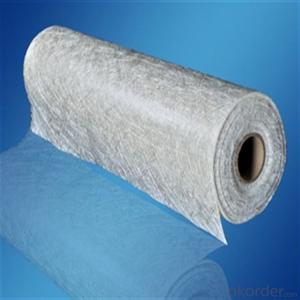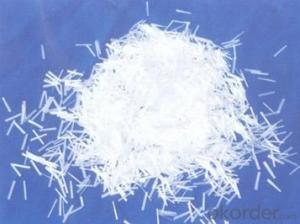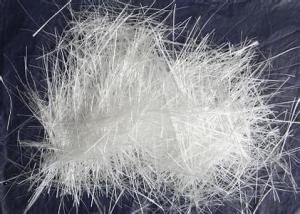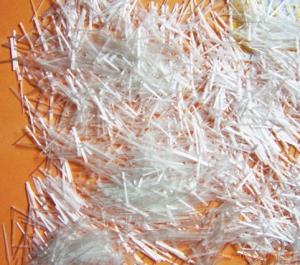E-Glass Fiber Glass Chopped Strands For Thermoplastics
- Loading Port:
- Shanghai
- Payment Terms:
- TT OR LC
- Min Order Qty:
- 20000 kg
- Supply Capability:
- 200000 kg/month
OKorder Service Pledge
OKorder Financial Service
You Might Also Like
1.Brief Introductions
E-Glass Fiber Glass Chopped Strands For Thermoplastics are know for excellent strand integrity, superior flowability and processing property, delivering excellent mechanical property and high surface quality to its finished product.
2.Product Features
Extremely low resin demand, delivering low viscosity to BMC paste
High strand stiffness; Compatible with rubber
3.Product Specifications
Property | Fibre diameter | Moisture Content | Size Content | Chop |
(%) | (%) | (%) | (%) | |
Mathods | IS01888 | ISO3344 | ISO1887 | |
3mm | ±10 | ≤3.0 | 0.1±0.05 | 98 |
6mm | ||||
9mm | ||||
12mm |
Special specification can be produce according to customer requirements.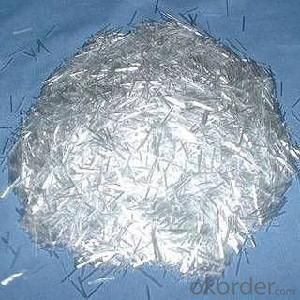
4.FAQ
Packaging:
Each bag can be taken (15-25kgs)。 Could also take a big container bag.
Storage:
Unless otherwise specified, It should be stored in a dry, cool and rain-proof area. It is recommended that the room temperature and humidity should be always maintained at 15℃~35℃ and 35%~65% respectively.
- Q:How does the weight of the chopped strand affect its performance?
- The weight of the chopped strand directly affects its performance. A heavier chopped strand usually indicates a higher amount of fiber content, which can enhance the strength and stiffness of the composite material. However, an excessively heavy chopped strand can lead to difficulties in processing and may result in uneven dispersion within the matrix. On the other hand, a lighter chopped strand may compromise the mechanical properties of the composite, reducing its strength and durability. Therefore, finding the right balance between weight and fiber content is crucial to optimize the performance of the chopped strand in composite materials.
- Q:How is the moisture resistance of fiberglass chopped strand composites tested?
- The moisture resistance of fiberglass chopped strand composites can be evaluated through different testing methods, including immersion testing, humidity testing, and water absorption testing. In immersion testing, the composite samples are fully submerged in water for a designated time period. The samples are then inspected for signs of delamination, weight gain, dimensional changes, or any visible damage caused by moisture absorption. This test assesses the composite's ability to resist moisture penetration over an extended period. Humidity testing, on the other hand, involves subjecting the composite samples to high humidity conditions for a specific duration. The samples are placed in a controlled environment with elevated humidity levels, usually around 95% relative humidity. Changes in weight, appearance, and mechanical properties of the samples are observed to determine their resistance to moisture in high humidity environments. Water absorption testing measures the amount of water that the composite can absorb over time. This test is typically conducted by immersing the samples in water or exposing them to a high humidity environment for a set period. The samples are then weighed to determine the amount of water absorbed. This test helps quantify the composite's susceptibility to moisture absorption, which can impact its mechanical properties and performance. By utilizing these testing methods, manufacturers, engineers, and researchers can assess the moisture resistance of fiberglass chopped strand composites and ensure they meet industry standards, customer requirements, and intended applications. These tests help ensure the durability, reliability, and longevity of the product in different environmental conditions by evaluating its ability to resist moisture penetration.
- Q:What is the average diameter of fiberglass chopped strand?
- The average diameter of fiberglass chopped strand is typically around 10-20 microns.
- Q:What are the typical design considerations when using fiberglass chopped strand composites?
- When utilizing fiberglass chopped strand composites, there are several key factors to take into consideration in the design process. First and foremost, it is essential to assess the mechanical properties of the chopped strand composites. Fiberglass composites are renowned for their excellent strength-to-weight ratio, making them highly desirable for numerous applications. However, the specific mechanical properties, including tensile strength, flexural strength, and impact resistance, will vary depending on the type of glass fibers, resin matrix, and manufacturing technique employed. Therefore, it is vital to fully comprehend the specific requirements of the application and carefully select the appropriate combination of materials and manufacturing methods to achieve the desired mechanical properties. Secondly, one must consider the dimensional stability of fiberglass chopped strand composites. These composites can experience thermal expansion and contraction, leading to dimensional changes in the final product. This can be particularly problematic in applications that necessitate strict tolerances. To address this issue, designers may need to incorporate design elements such as ribs, flanges, and gussets to enhance stiffness and minimize the risk of distortion. Another crucial consideration is the environmental durability of fiberglass chopped strand composites. Although these composites possess inherent resistance to many chemicals and environmental conditions like moisture and UV radiation, they can still experience degradation over time. Exposure to harsh chemicals, extreme temperatures, and prolonged UV exposure can weaken the composite material. As a result, it is crucial to evaluate the expected environmental conditions and select the appropriate resin formulation and protective coatings, if necessary, to ensure long-term durability. Furthermore, one must take into account the manufacturing process and cost considerations. Fiberglass chopped strand composites can be manufactured using various techniques, including hand lay-up, spray-up, filament winding, and pultrusion. Each method has its own advantages and limitations in terms of production rate, complexity of shapes, and cost. Designers must carefully assess the manufacturing requirements and choose the most suitable process that aligns with the desired design specifications and cost constraints. Lastly, it is of utmost importance to consider the safety and health aspects associated with fiberglass chopped strand composites. The handling and processing of fiberglass materials can release fine glass fibers, which can pose a health risk if inhaled. Designers should incorporate appropriate safety measures, such as dust control systems and personal protective equipment, to minimize the risk of exposure to fiberglass particles during manufacturing and product use. In conclusion, when working with fiberglass chopped strand composites, it is crucial to consider factors such as mechanical properties, dimensional stability, environmental durability, manufacturing process, cost, and safety. By carefully evaluating these aspects, designers can ensure that the final product meets the required performance, durability, and safety standards.
- Q:Is fiberglass chopped strand suitable for renewable energy applications?
- Fiberglass chopped strand is indeed suitable for renewable energy applications. Known for its strength, durability, and corrosion resistance, fiberglass is an excellent choice for various renewable energy applications. For instance, in the field of wind energy, manufacturers commonly use fiberglass chopped strand to produce wind turbine blades. The material's high tensile strength and ability to withstand harsh weather conditions make it a perfect fit for this purpose. Additionally, fiberglass's lightweight properties are crucial in reducing blade weight and maximizing energy production. Moreover, fiberglass chopped strand finds application in the construction of solar panels. Its excellent electrical insulation ensures the efficiency and safety of solar panels. Furthermore, fiberglass's high thermal resistance allows the panels to endure extreme temperatures and have a longer lifespan. Furthermore, hydroelectric power equipment manufacturing can also benefit from the use of fiberglass chopped strand. Its resistance to corrosion makes it suitable for withstanding the harsh conditions found in hydroelectric power plants, including exposure to water and moisture. To sum up, fiberglass chopped strand is a reliable and effective material for a wide range of renewable energy applications. Its strength, durability, and resistance properties make it an ideal choice for wind energy, solar power, and hydroelectric power applications.
- Q:What are the fatigue resistance properties of fiberglass chopped strand?
- Fiberglass chopped strand exhibits excellent fatigue resistance properties due to its high strength and flexibility. Its unique composition and structure allow it to withstand repeated loading and stress cycles without experiencing significant deterioration or failure. This makes it a desirable material for various applications that involve dynamic or cyclic loading, such as automotive components, wind turbine blades, and aerospace structures.
- Q:how long is the minimum length of the chopping glass fiber?
- 5mm, 12mm, 3mm, 9mm.5mm, 6mm, 41, 24mm, etc.
- Q:How is fiberglass chopped strand used in the renewable energy sector?
- Fiberglass chopped strand is commonly used in the renewable energy sector for reinforcing and strengthening various components of wind turbine blades. The chopped strands are typically mixed with resin to create composite materials that provide enhanced durability, flexibility, and lightweight characteristics. This reinforcement helps to increase the overall efficiency and lifespan of wind turbine blades, enabling them to generate more energy and withstand harsh environmental conditions.
- Q:How does the surface treatment of fiberglass chopped strand affect its adhesion to resin?
- The adhesion of resin to fiberglass chopped strand is significantly affected by the surface treatment. During the manufacturing process, fiberglass chopped strand is typically treated with a sizing agent to improve its compatibility with resin systems. The purpose of this surface treatment is to establish a chemical bond between the chopped strand and the resin matrix. By creating a thin layer on the surface of the fiberglass strands, the sizing agent acts as a bridge between the hydrophilic glass fibers and the hydrophobic resin. This layer enhances the wetting and adhesion properties of the fiberglass, promoting better bonding with the resin. The choice of sizing agent depends on the specific resin system being utilized. Different types of sizing agents can be employed to optimize adhesion with polyester, epoxy, or vinyl ester resins. Moreover, the sizing agent can be customized to offer additional advantages, such as improved impact resistance, UV stability, or heat resistance. If the fiberglass chopped strand is not adequately surface treated, the adhesion between the strands and the resin may be compromised. Inadequate wetting of the fibers by the resin can result in weak interfacial bonding, leading to delamination or reduced mechanical properties in the final composite product. In summary, the surface treatment of fiberglass chopped strand plays a vital role in enhancing its adhesion to resin. It enhances the wetting and bonding properties, ensuring the creation of a robust and long-lasting composite material.
- Q:What are the typical shear properties of fiberglass chopped strand composites?
- The typical shear properties of fiberglass chopped strand composites include high shear strength, excellent resistance to shear deformation, and good shear modulus. These materials demonstrate the ability to withstand shear forces and maintain their structural integrity, making them suitable for various applications requiring strength and stability under shear stress.
1. Manufacturer Overview |
|
|---|---|
| Location | |
| Year Established | |
| Annual Output Value | |
| Main Markets | |
| Company Certifications | |
2. Manufacturer Certificates |
|
|---|---|
| a) Certification Name | |
| Range | |
| Reference | |
| Validity Period | |
3. Manufacturer Capability |
|
|---|---|
| a)Trade Capacity | |
| Nearest Port | |
| Export Percentage | |
| No.of Employees in Trade Department | |
| Language Spoken: | |
| b)Factory Information | |
| Factory Size: | |
| No. of Production Lines | |
| Contract Manufacturing | |
| Product Price Range | |
Send your message to us
E-Glass Fiber Glass Chopped Strands For Thermoplastics
- Loading Port:
- Shanghai
- Payment Terms:
- TT OR LC
- Min Order Qty:
- 20000 kg
- Supply Capability:
- 200000 kg/month
OKorder Service Pledge
OKorder Financial Service
Similar products
New products
Hot products
Related keywords























